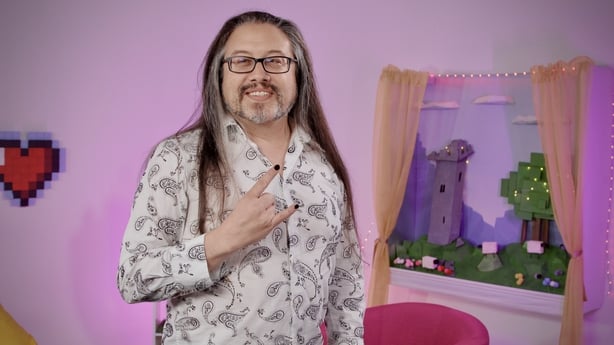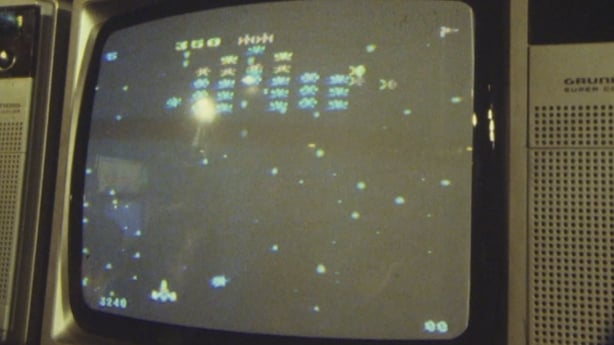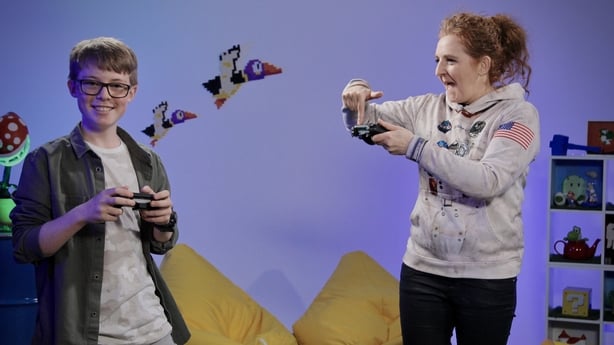Gamer Mode continues this weekend and legendary games designer John Romero joins the gang on Saturday at 11.30am on RTÉ2 to tell us all about his work.
It's a good way to look at how game design has evolved and how, with more powerful consoles they were able to let their imagination run wild.
The show's Producer Tríona Campbell from Roundstone Media is going to tell us a bit more on the history of how games went from really simple moving dots and blocks on a screen to the creation of new worlds where players play with and against each other all over the world.

Sid Meier, the master of strategy game design, once said that a game is a series of meaningful choices. I could not agree more. While playing a video game we make dozens – sometimes hundreds – of small decisions per minute, like jump, shoot or move the joystick left or right.
And it is the role of the game designer to create those choices, present the player with exciting options that will keep them engaged for hours. They decide on the overall design and purpose for the game, storyline, characters, visual looks, and more importantly, the balance of the game and its rule system. These are rules that the players will base their decisions on.
The first video games were mainly based on timing and precision. Players need to understand the loops and routines of the game, where the aliens will attack (in Space Invaders), understand geometry rules (Pong) or predict in advance the ghost's movements (Pacman). These games presented simple concepts, easy to understand routines and to succeed in the game and enter the leader board, players just needed to practice a lot and react fast – make fast decisions and the right choices.

In those days, the secret to a good game design was to create these loops (levels) with a growing level of difficulty. First levels were somehow easy to master, but then they become more and more challenging. Not too tricky, because that would make the player give up, and not too easy, as that would bore the player. The balance of a growing but overcoming challenge drove the video game industry over the first decade.
Over the years, things changed. The games become less mechanical, and story started to be incorporated. Characters were developed, universes where created, and then games became a more emotional medium. It was no longer about just mastering eye/hand coordination skills but also about how to get involved in the game’s characters and stories.
The increase of graphics and sound capabilities in gaming consoles and Personal Computers helped in the development of these more emotional experiences. Cut scenes were used to introduce backstory; characters became more photorealistic, background and level design brought us to fantastic new worlds, and custom-made scores and sound design signed the deal. Games became art, and suddenly people of all ages started playing video games. And with that the role of the game designer became more complex.

Video games became a social experience. Multiplayer games and Multiplayer On-line worlds were introduced. Putting our name on the leader board stopped being the ultimate goal of video game playing and design. Game Designers embraced the competitiveness of the human beings.
They started to introduce that level of competition between players, whether it was family members competing on Mario Kart in the same room or players in different parts of the world competing against each other on Doom. Players from around the globe could now be connected to servers and competed with real people instead of predictable bots generated by code.
So fast forward to 2020. What makes a good game design today? Games consist of many things outside of the systems and rules in place. The meaning, the tone, the sound, the visual look, the story, be it pre-defined or created by players via interactions with mechanics, the multiplayer elements, and many other things.
The game designers job becomes more and more complex as games are not played in a vacuum. Video games now exist in an ecosystem that defines the feelings and emotions that players experience after interacting with the game. After all, it is the combination of all that stays in people’s minds. Not the mechanics of the game itself, but what it made us feel.
The experience, the way you feel during and after you play a game is the job of the Games Designer. He or she will combine the mechanic element of the video game, the characters and story. Define how the interactions work, what choices the player is allowed to make, and how they impact the game.
The key to modern game design is bringing together all these elements to create an engaging and meaningful experience for the player, whether it is through shooting enemies in Doom or Quake or getting emotionally engaged with the story of Ellie in The Last of Us. That is the magic that a games designer creates.

This weekend on Gamer Mode
On Saturday on RTÉ2 at 11.30am legendary games designer John Romero chats to Éabha & Millie. TicTok superstar Bonnie Rose battles it out in Nevan vs the World. On Streamers' Corner, Séafra talks to Alan Carrigan about his disabled gamer channel and our experts' review 'Little Big Workshop’ and this episode’s My Gaming Pick is 'Fornite’.
Sunday's show on RTÉ at 12.05pm Young Offenders star Demi Isaac Oviawe takes on Nevan in Mario Kart. Daniel Neville talks about all things Yu-Gi-Oh. Séafra chats with teenager Jimmar about gaming on Facebook. The Big review gives its verdict on ‘Tennis World Tour 2’ and this episode’s My Gaming Pick is ‘Mario Kart’
If you missed the first four show catch up on the RTÉ Player
